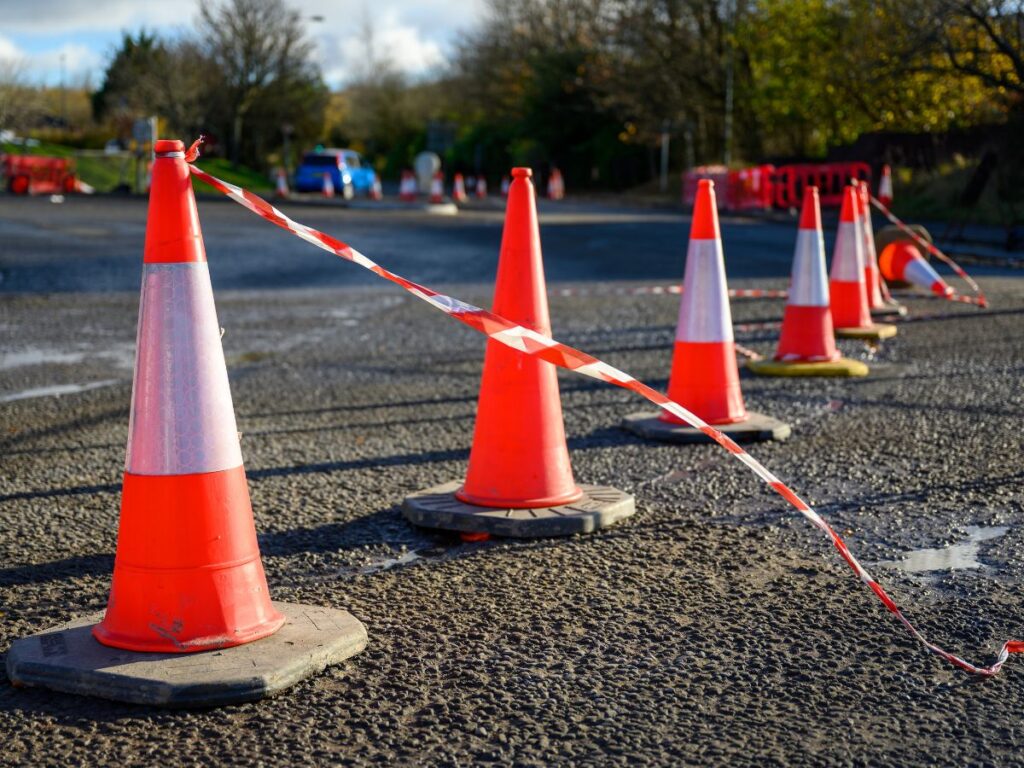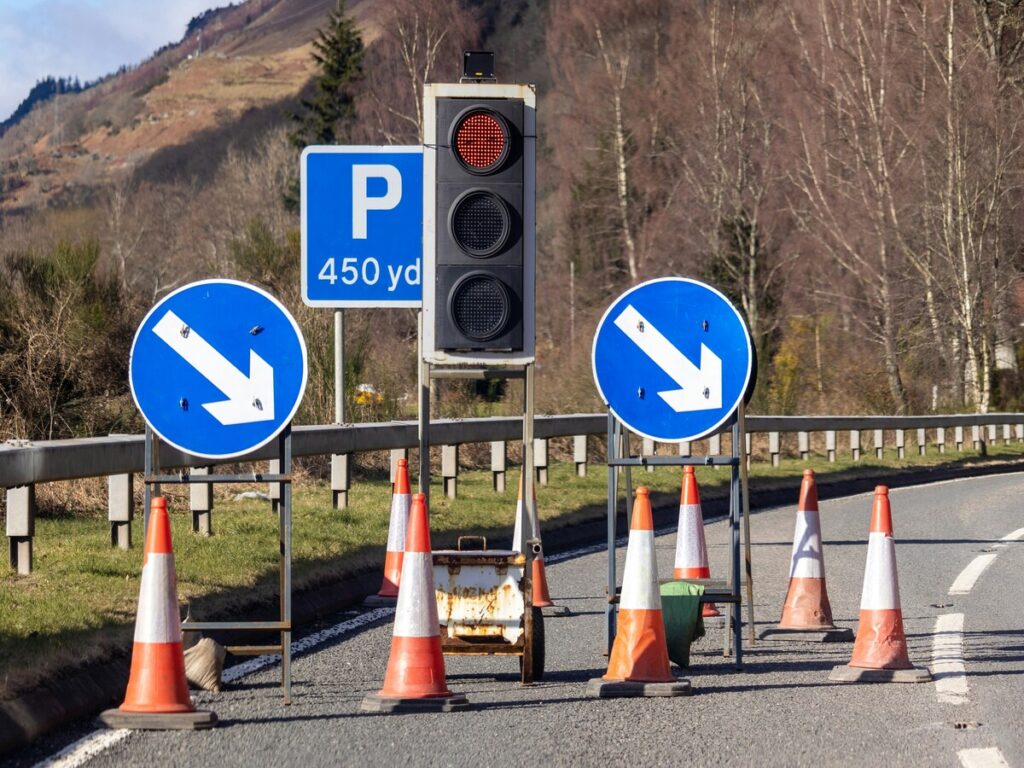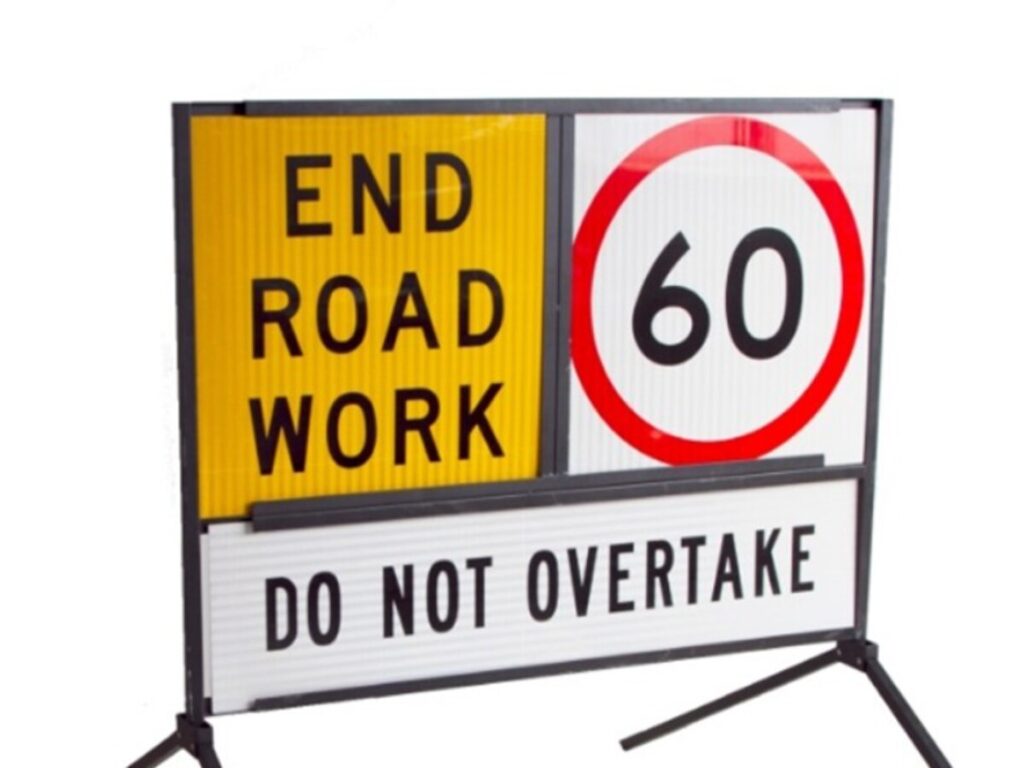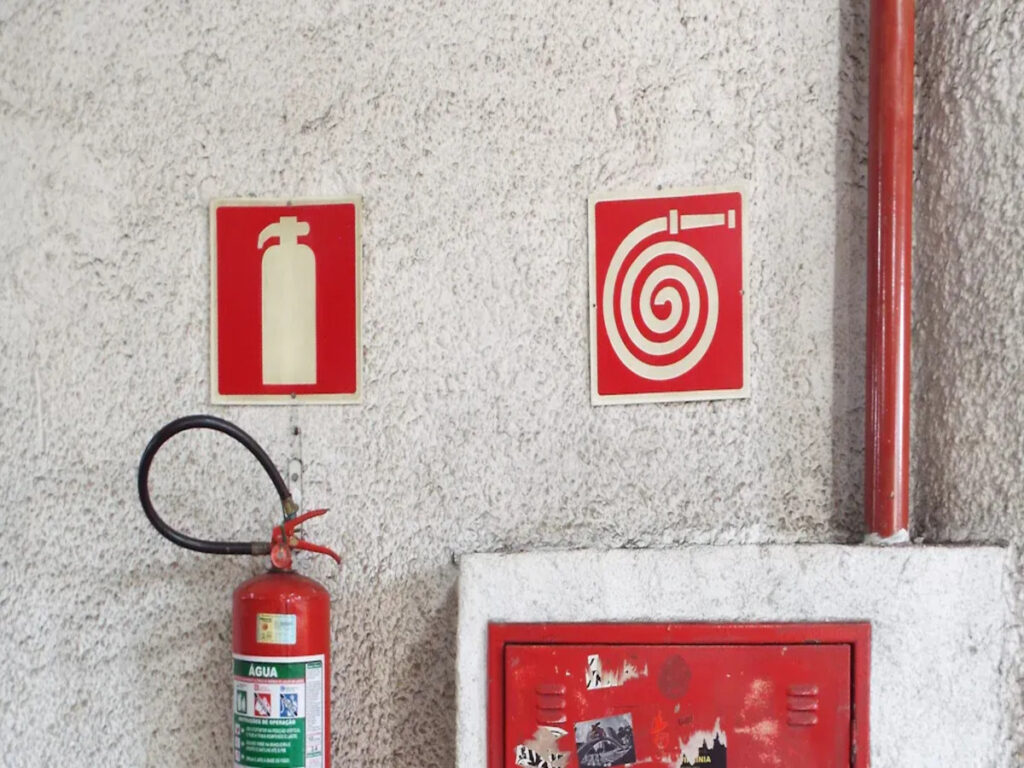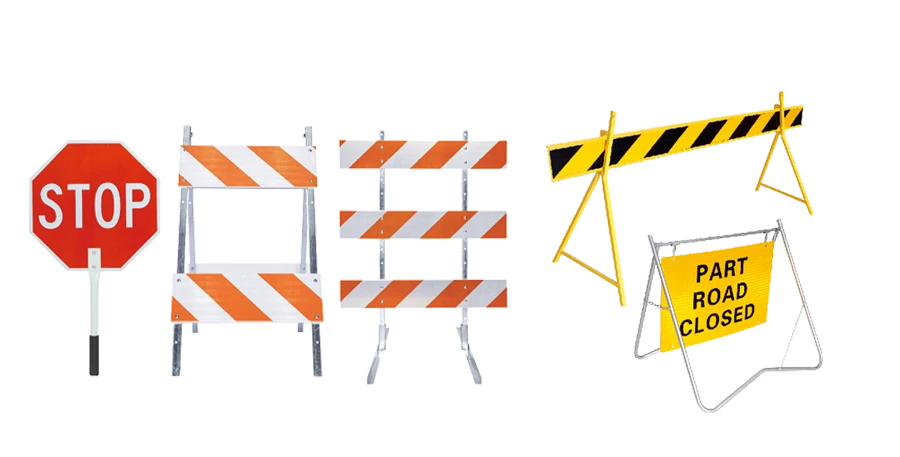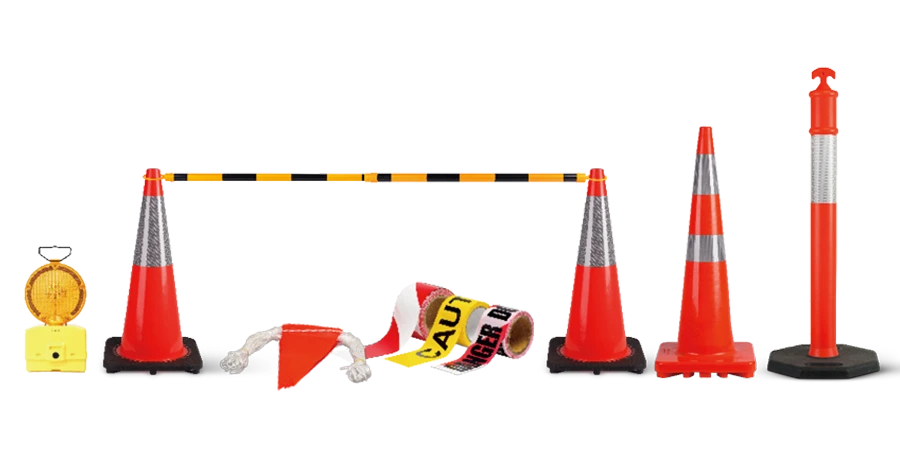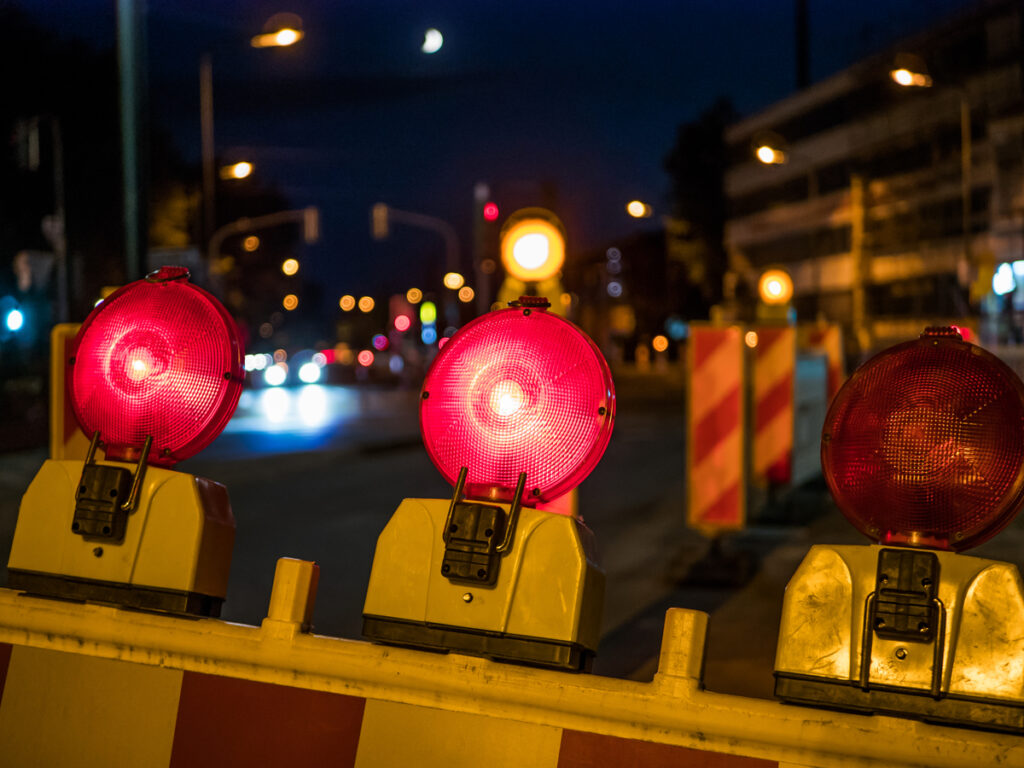
LED -Warnlichter sind in der Regel besser für die Verkehrssicherheit. Jährlich, Über eine Million Menschen sterben an Verkehrsunfällen. Bis zu 50 Millionen Menschen werden jedes Jahr bei Unfällen verletzt. Bei schlechten Lichtverhältnissen steigt die Wahrscheinlichkeit von Unfällen in der Nacht. Studien zeigen, dass eine gute Straßenbeleuchtung die Unfallrate um bis zu senken kann 30%.
Mittlerweile nutzen immer mehr Menschen LED-Warnleuchten. In 2023, über 67% der weltweit verkauften Einheiten waren LED. Sie sind sehr hell, verbrauchen wenig Energie, und lange lange Zeit. Dies macht sie zu einer guten Wahl für den Verkehr und die öffentliche Sicherheit.
Bei OPTRAFFIC, Wir bieten qualitativ hochwertige LED -Warnlichter Entwickelt, um die Verkehrssicherheit zu erhöhen und die Sicht zu verbessern. Unsere Produkte entsprechen den höchsten Sicherheitsstandards, Gewährleistung der Sicherheit von Fahrern und Fußgängern. Entdecken Sie noch heute unser Sortiment und schauen Sie sich unseren Blog an, LED -Warnlichter für die Verkehrssicherheit: Was zu wissen, bevor Sie kaufen, für weitere Einblicke.
Sicherheitsvorteile
Sichtbarkeit und Reaktion
LED-Warnleuchten leuchten viel heller als alte Glühlampen. Dadurch können Fahrer Gefahren und Verkehrszeichen besser erkennen. Es ist nachts oder bei schlechtem Wetter sehr nützlich. Experten sagen, dass LEDs bis zu verbrauchen 80% weniger Energie. Sie helfen Autofahrern auch, bei Nebel oder Regen besser zu sehen. Die fokussierten Strahlen der LEDs reduzieren die Blendung. Dies erleichtert das Erkennen von Dingen in Bodennähe. Dies ist wichtig für Nebelscheinwerfer und Einsatzfahrzeuge.
LED-Warnleuchten schalten sich sofort ein. Dadurch können andere Fahrer schnell auf blinkende Lichter an Polizeiautos reagieren, Krankenwagen, oder Straßenbaufahrzeuge. LEDs bleiben kühl und halten länger. Sie arbeiten gut im Regen, Schnee, und Nebel. Studien zeigen, dass alte Glühlampen mit Gelbtönen bei Nebel manchmal besser funktionieren. Allerdings sind LEDs meist heller und energiesparender. Die Farbtemperatur von LEDs kann ihre Funktion bei Nebel beeinflussen. Die meisten neuen LED-Warnleuchten sollen den Menschen helfen, besser zu sehen und sicher zu bleiben.
Unfallreduzierung
Viele Städte nutzen mittlerweile LED-Warnleuchten, um die Straßen sicherer zu machen. Aber Forschung aus Birmingham, Vereinigtes Königreich, habe etwas Überraschendes gefunden. Nach dem Einbau heller LED-Leuchten, Die Zahl der Verkehrsunfälle ist gestiegen statt gesunken. Die folgende Tabelle zeigt, was sich geändert hat:
| Metrisch | Beobachtete Änderung nach der LED-Installation | Konfidenzintervall (95%) |
|---|---|---|
| 24-Stunde Verkehrsunfall (RTC) Rate | +11% | 2% Zu 20% |
| RTC-Rate nur bei Dunkelheit | +16% | 2% Zu 32% |
| RTC-Rate bei Dunkelheit, angepasst an die RTC-Rate bei Tageslicht | +4% (statistisch nicht signifikant) | -12% Zu +23% |
Diese Studie ergab keine geringeren Unfälle nach der Umstellung auf LED-Leuchten. Stattdessen, es gab weitere Abstürze, Besonders nachts. Die Ergebnisse zeigen, dass LEDs den Menschen helfen, besser zu sehen. Aber andere Dinge, wie das Verhalten der Fahrer und den Verkehrsfluss, auch für die Unfallhäufigkeit von Bedeutung.
Verbesserungen der allgemeinen Verkehrssicherheit
LED-Warnleuchten haben die Straßen sicherer gemacht, insbesondere an Zebrastreifen und Orten ohne Ampeln. Studien zeigen, dass Autofahrer häufiger anhalten, wenn sie LED-Warnleuchten verwenden. Hier sind einige wichtige Punkte:
- Durch den Einsatz von LED-Warnleuchten hielten nachts mehr Autofahrer an Zebrastreifen an.
- Mit normaler Straßenbeleuchtung, nur 19% der Fahrer angehalten.
- Spezielle LED-Leuchten hergestellt 38% der Autofahrer halten an.
- Unter Verwendung von Rundumkennleuchten und LED-Streifen zusammen überarbeitet 63% der Autofahrer halten an.
- LED-Streifen am Bordstein und Blinkleuchten halfen den Autofahrern, die überquerenden Personen besser zu erkennen und ihnen mehr Aufmerksamkeit zu schenken.
- Dieses System funktionierte am besten nachts und wenn es schwer zu sehen war, was für die Sicherheit wichtig ist.
- Andere LED-Systeme, wie blinkende Muster auf Schildern, führte auch dazu, dass mehr Autofahrer anhielten.
- Im Vergleich zu anderen Möglichkeiten, LED-Warnleuchten halfen Autofahrern, häufiger anzuhalten und machten Kreuzungen sicherer.
LED-Warnleuchten sorgen für die Sicherheit von Fahrern und Passanten. Mittlerweile nutzen immer mehr Verkehrssysteme sie. Sie helfen den Menschen, besser zu sehen und schneller zu reagieren. Diese Änderungen tragen dazu bei, Unfälle zu reduzieren und die Straßen für alle sicherer zu machen.
Kostenvergleich
Erstinvestition
LED-Warnleuchten sind in der Anschaffung teurer als herkömmliche Glühlampen. Eine LED-Straßenlaterne kostet normalerweise zwischen $200 Und $500. Ein traditionelles Hochdruck-Natrium (HPS) Licht nur Kosten $50 Zu $150. Die folgende Tabelle zeigt den Preisunterschied:
| Lichttyp | Anschaffungskostenspanne | Relative Kosten im Vergleich zu HPS |
|---|---|---|
| Traditionelle HPS-Leuchten | $50 – $150 | Grundlinie |
| LED-Straßenlaternen | $200 – $500 | Etwa 4 mal höher |
LEDs benötigen spezielle Halterungen und manchmal neue Kabel oder Masten. Die Installation von LED-Systemen kann ab kosten $5,000 Zu $20,000 oder mehr. Der Preis hängt davon ab, wie groß und komplex das Projekt ist. Herkömmliche Glühlampen sind zunächst einmal günstiger in der Installation.
Wartung und Lebensdauer
LED-Warnleuchten halten viel länger als herkömmliche Glühlampen. Die meisten LEDs funktionieren 50,000 Zu 100,000 Std.. Herkömmliche Glühlampen halten nur lange 10,000 Zu 25,000 Std.. Dadurch müssen LEDs seltener ausgetauscht werden. Die folgende Tabelle vergleicht, wie lange sie halten und wie viel Pflege sie benötigen:
| Besonderheit | LED -Warnlichter | Traditionelle Beleuchtung (HPS/Metallhalogenid) |
|---|---|---|
| Durchschnittliche Lebensdauer | 50,000 Zu 100,000 Std. | 10,000 Zu 25,000 Std. |
| Wartung | Weniger häufiger Austausch | Häufigerer Austausch |
| Wärmeableitung | Effizient, reduziert den Verschleiß | Weniger effizient, schnellerer Verschleiß |
LEDs müssen außerdem weniger gereinigt und repariert werden. Dies hilft, im Laufe der Zeit Geld für die Wartung zu sparen. Jährliche Kontrollen und Reinigungen sind weiterhin erforderlich. Sondern weil LEDs länger halten, Es gibt weniger Störungen und geringere Arbeitskosten.
Gesamtkosten im Laufe der Zeit
LED-Warnleuchten kosten zunächst mehr, sparen aber später Geld. Über 10 Jahre, LED-Systeme kosten in der Regel 15-25% weniger als herkömmliche Glühlampen. Dies liegt daran, dass sie weniger Energie verbrauchen, benötigen weniger Ersatz, und haben geringere Wartungskosten. Viele britische Städte haben durch die Umstellung auf LEDs viel Geld gespart. Sheffield nutzte bis zu 65% weniger Energie und geringere Wartungskosten. Edinburgh rechnet damit, 54 Millionen Pfund einzusparen 20 Jahren durch den Einsatz von LED-Straßenlaternen.
Die folgende Tabelle zeigt die Gesamtkosten für hochwertige und günstigere LED-Warnleuchten 10 Jahre:
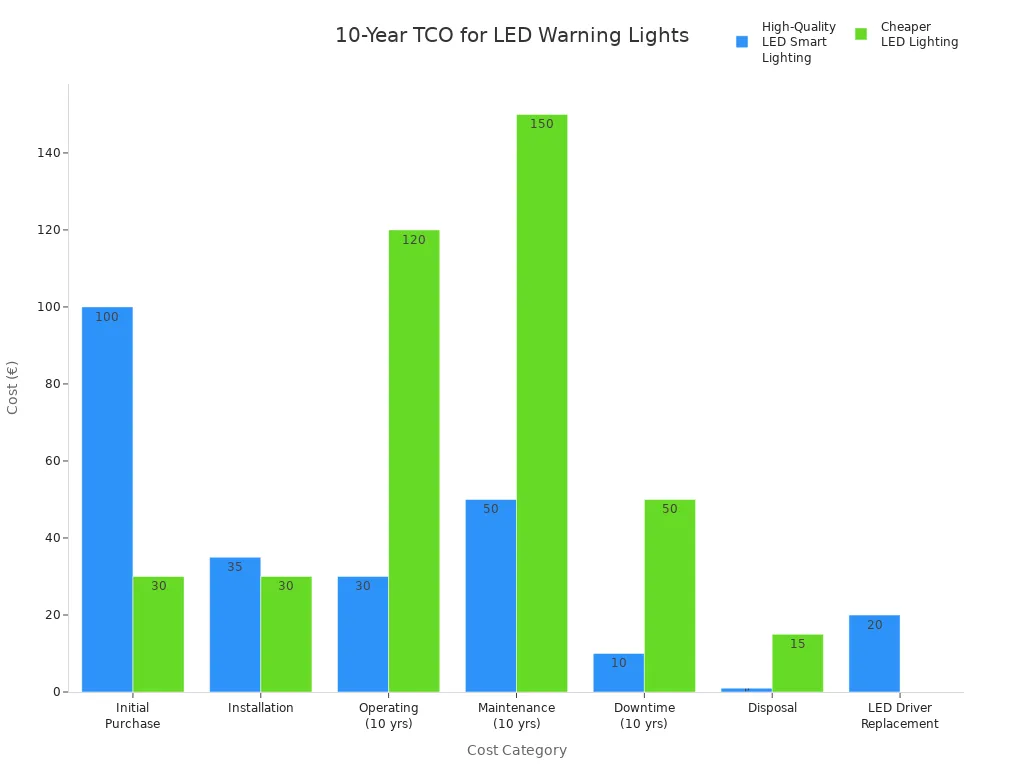
Im Laufe der Zeit, Durch die Einsparung von Energiekosten und Wartung sind LEDs eine kluge Wahl für die Verkehrssicherheit.
Energieeffizienz
Stromverbrauch
LED-Warnleuchten verbrauchen viel weniger Energie als ältere Leuchten. Die meisten LED-Lampen benötigen nur wenig Strom, um so hell zu leuchten wie Glüh- oder Halogenlampen. Zum Beispiel, Eine LED-Warnleuchte mit 400–500 Lumen verbraucht etwa 6–7 Watt. Eine Glühlampe mit der gleichen Helligkeit verbraucht ca 40 Watt. Das bedeutet, dass LED-Warnleuchten etwa verbrauchen 90% weniger Energie. Halogenlampen verbrauchen weniger Strom als Glühlampen, aber sie verbrauchen immer noch mehr als LEDs.
| Helligkeit (Lumen) | Glühlampenleistung (Watt) | LED-Leistung (Watt) |
|---|---|---|
| 400 - - 500 | ~40W | 6 – 7W |
| 650 - - 850 | ~60W | 7 – 10W |
| 1000 - - 1400 | ~75W | 12 – 13W |
| 1450 - - 1700+ | ~100W | 14 – 20W |
| 2700+ | ~150W | 25 – 28W |
Städte, die LED-Warnleuchten einsetzen, sparen viel Energie. Chicago spart etwa 181.7 Millionen Kilowattstunden pro Jahr nach der Umstellung auf LED-Straßenlaternen. Dadurch werden die Energiekosten um mehr als die Hälfte gesenkt. Einige Städte in Europa haben bis zu gespart 80% bei den Energiekosten nach der Umstellung auf LEDs. Diese Ergebnisse zeigen, wie viel besser sich die LED-Technologie zum Energiesparen eignet.
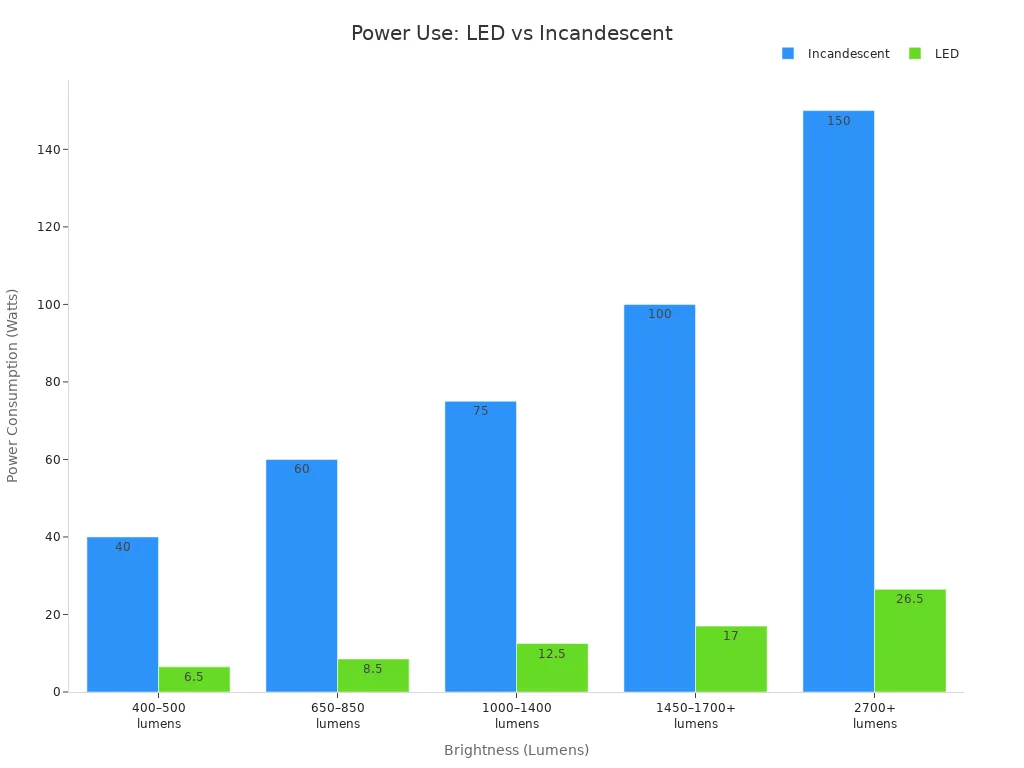
Umweltauswirkungen
LED-Warnleuchten sind gut für die Umwelt. Sie verbrauchen weniger Energie, Daher verursachen Kraftwerke weniger CO2-Emissionen. Eine LED-Glühbirne kann ca. einsparen 400 Pfund Kohlendioxid im Laufe ihrer Lebensdauer im Vergleich zu einer Glühbirne. LEDs halten viel länger, oft bis zu 100,000 Std.. Das bedeutet weniger Abfall und es werden weniger neue Glühbirnen benötigt.
LED-Warnleuchten enthalten keine gefährlichen Stoffe wie Quecksilber, was einige alte Glühbirnen haben. Dadurch sind sie umweltfreundlicher und einfacher zu entsorgen.
Weitere gute Dinge sind weniger Hitze und eine bessere Kontrolle darüber, wohin das Licht geht. LEDs helfen, die Lichtverschmutzung zu stoppen, was Tiere schützt und den Nachthimmel klarer hält. Neue Vorschriften bevorzugen jetzt LEDs, weil sie gut funktionieren und besser für den Planeten sind. Städte, die LED-Warnleuchten verwenden, tragen dazu bei, die Zukunft sauberer und umweltfreundlicher zu gestalten.
Haltbarkeit und Zuverlässigkeit
Wetterwiderstand
LED-Warnleuchten funktionieren bei schwierigem Wetter gut. An sehr kalten Orten leuchten sie weiter, sogar unter -25°F. Herkömmliche Glühbirnen können bei Frost flackern oder schwächer werden. LEDs tun dies nicht. Ihr solides Design bedeutet Schnee, Eis, und der Wind zerbricht sie nicht so leicht. Alte Lampen können bei schnellem Wetterumschwung zu heiß werden oder Risse bekommen. LEDs geben weniger Wärme ab, sodass sich auf der Linse kein Eis bildet. Gute LED-Leuchten haben hohe IP-Schutzarten wie IP65 oder IP67. These ratings protect them from water and dust. This keeps the lights working in heavy rain or dust storms.
Well-made LED warning lights stay bright and save energy in any weather. Dies ist sehr wichtig für die Verkehrssicherheit, especially in winter or storms.
Shock and Vibration
LED warning lights are strong against bumps and shaking. Their solid build means there are no thin wires to snap. Road safety gear gets hit and shaken a lot. LEDs keep working when old bulbs might stop. Zum Beispiel, LED light bars on emergency cars or building machines do not break easily. They also do not get too hot. This means they fail less and need less fixing.
- LEDs work well on rough roads, Gebäudestätten, and emergency cars.
- Old bulbs often break because their wires snap or connections get loose.
Consistent Performance
LED warning lights always work well in important moments. Sie schalten sich sofort ein, auch wenn es kalt ist. Sie brauchen keine Zeit zum Aufwärmen. Dieses Schnelllicht ist für Einsatzfahrzeuge und Gebäudebereiche von entscheidender Bedeutung. Da zählt jede Sekunde. LEDs halten viel länger, oft 50,000 Zu 100,000 Std.. Das bedeutet, dass sie nicht plötzlich aufhören zu arbeiten und zur Sicherheit auf den Straßen beitragen.
| Aspekt | LED -Warnlichter | Traditionelle Beleuchtung |
|---|---|---|
| Wetterwiderstand | Hoch (IP65–IP68, Funktioniert bei extremer Kälte/Hitze) | Untere, anfällig für Fehler |
| Schock & Vibration | Exzellent (Festkörper, keine Filamente) | Arm, Filamente brechen leicht |
| Lebensdauer | 50,000–100.000 Stunden | 1,000–2.500 Stunden |
| Zuverlässigkeit im Notfall | Sehr hoch, sofortiger Start, konstante Leistung | Untere, Gefahr eines plötzlichen Ausfalls |
LED-Warnleuchten werden bei der Verkehrssicherheit eingesetzt. Ihre robuste Bauweise und ihre stabile Arbeit tragen dazu bei, Fahrer zu halten, Arbeiter, und Menschen, die bei jedem Wetter sicher unterwegs sind.
LED-Verkehrssignale und Lichter
Anwendungen in der Praxis
Viele Städte nutzen mittlerweile LED-Verkehrssignale, um die Straßen sicherer zu machen. Diese Signale sind an stark befahrenen Kreuzungen zu finden, Übergänge für Menschen, und Kreisverkehre. Räte in London, Manchester, und Birmingham haben alte Glühbirnen durch neue LED-Ampeln ersetzt. Einsatzfahrzeuge wie Krankenwagen und Polizeiautos verwenden LED-Ampeln für schnelle und klare Signale. Auf Baustellen werden häufig tragbare LED-Verkehrssignale zur Steuerung von Straßenänderungen eingesetzt.
LED-Verkehrssignale helfen, Verwirrung und Warten zu vermeiden. Ihre hellen Lichter sind im Sonnenlicht und bei starkem Regen zu sehen. Dadurch funktionieren sie bei jedem Wetter gut.
Einige Flughäfen und Bahnübergänge nutzen LED-Ampeln, um Autos und Personen sicher zu leiten. Diese Signale verbrauchen weniger Energie und müssen weniger repariert werden, Das spart Geld für die Kommunen.
Farb- und Lichtqualität
LED-Verkehrssignale zeigen helle und klare Farben. Im Gegensatz zu alten Glühbirnen, LED-Ampeln strahlen reines Rot aus, Gelb, und grüne Farben ohne Verwendung von Filtern. Dadurch sind die Lichter hell und gut sichtbar. Autofahrer können diese Farben schon aus großer Entfernung oder bei starkem Tageslicht erkennen.
- LED-Module von Top-Herstellern leuchten heller als alte Signale.
- Einige LED-Signale sehen möglicherweise etwas punktförmig aus, aber gutes Design lässt sie glatt aussehen.
- Der beleuchtete Teil jedes Signals verändert die Sichtweise der Fahrer auf Farbe und Helligkeit.
Die folgende Tabelle zeigt die wesentlichen Unterschiede zwischen LED-Ampeln und alten Signalen:
| Besonderheit | LED-Ampeln | Traditionelle Signale |
|---|---|---|
| Farbgenauigkeit | Hoch | Mäßig |
| Helligkeit | Vorgesetzter | Untere |
| Energieverbrauch | Niedrig | Hoch |
| Wartung | Minimal | Häufig |
Verkehrsregeln, Wie die von den Institut für Verkehrsingenieure (Ite), sagen wir, dass LED-Verkehrssignale strengen Farbregeln folgen müssen, Helligkeit, und wo sie platziert werden. Diese Regeln tragen dazu bei, dass Signale für alle Verkehrsteilnehmer sicher und nützlich bleiben.
Verkehrsmanagement und zukünftige Trends
Smart Systems
Städte auf der ganzen Welt nutzen mittlerweile intelligente Systeme, um den Verkehr zu kontrollieren. Zu diesen Systemen gehören LED-Warnleuchten in cleveren Ampelnetzen. Sensoren und Kameras sammeln Live-Verkehrsdaten. Künstliche Intelligenz hilft, diese Informationen zu verstehen. Das System kann dann die Signalzeiten ändern und steuern, wie sich die Autos bewegen. An Orten wie New York und Singapur, Intelligente Systeme nutzen LED-Verkehrssignale. Dies trägt dazu bei, Staus zu vermeiden und Einsatzfahrzeuge schneller durchzukommen.
LED-Ampeln schalten sich schnell ein und sind gut sichtbar. Sie sparen Energie und halten lange. Dadurch eignen sie sich hervorragend für die intelligente Verkehrssteuerung. Viele intelligente Systeme können aus der Ferne gesteuert werden. Verkehrsleiter können Signale oder Warnlichter von einem zentralen Ort aus ändern. Einige LED-Warnleuchten nutzen Solarenergie. Sie funktionieren auch dann noch, wenn der Hauptstrom ausfällt. All diese Dinge tragen dazu bei, die Straßen sicherer und den Verkehr besser beherrschbar zu machen.
Der intelligente Einsatz von LED-Warnleuchten führt zu weniger Unfällen, less pollution, and smoother trips for everyone.
Wider Adoption
More cities and towns are choosing LED technology for traffic control. Governments and planners like LED traffic signals because they save money and work well. When traffic signals are upgraded, new LED modules are often added. These can last up to ten years. This means less fixing and safer roads.
Some reasons why more places use LEDs are:
- Cities have more cars and need better ways to control traffic.
- New rules say construction and school zones must have bright warning lights.
- Solar and wireless LED systems are good where power is not steady.
- Special LED warning lights are made for emergency vehicles and busy roads.
In Zukunft, systems will get even smarter. New LED chips will shine brighter and show better colours. Mikroprozessoren helfen dabei, das Licht genau dorthin zu richten, wo es benötigt wird. IoT wird es Verkehrsmanagern ermöglichen, Systeme von überall aus zu überwachen und zu steuern. Durch diese Änderungen wird die Verkehrskontrolle besser funktionieren und die Sicherheit für alle erhöht.
| Trend | Nutzen für das Verkehrsmanagement |
|---|---|
| Intelligente Systemintegration | Reaktion und Kontrolle in Echtzeit |
| Längere LED-Lebensdauer | Weniger Ersatz, niedrigere Kosten |
| Drahtlose und Solarfunktionen | Zuverlässiger Betrieb unter allen Bedingungen |
| Anpassungen und Upgrades | Flexible Lösungen für jede Straße |
LED-Warnleuchten sind besser als herkömmliche Beleuchtung. Sie verbrauchen weniger Energie und halten viel länger. Sie funktionieren bei jedem Wetter gut. Die folgende Tabelle zeigt die Hauptunterschiede:
| Aspekt | LED -Warnlichter | Traditionelle Glühlampen |
|---|---|---|
| Energieeffizienz | Konvertiert bis zu 80% von elektrischer Energie zu Licht | Konvertiert etwa 10% von elektrischer Energie zu Licht (90% als Wärme verschwendet) |
| Lebensdauer | Bis zu 50,000 Std. (um 50 mal länger) | Um 1,000 Std. |
| Haltbarkeit & Wetterwiderstand | Hohe Haltbarkeit; zuverlässig bei kaltem Wetter | Weniger langlebig; bei kaltem Wetter störanfällig |
| Wartung & Betriebskosten | Deutlich reduziert durch lange Lebensdauer und Haltbarkeit | Höher aufgrund häufiger Austausche und Ausfälle |
Viele Städte setzen mittlerweile auf LED-Systeme, um die Straßen sicherer zu machen. Sie tragen auch dazu bei, im Laufe der Zeit Geld zu sparen. Verkehrssicherheitsgruppen sagen, dass LED-Warnleuchten am besten für stark befahrene Straßen und Kreuzungen geeignet sind. Wenn die Technologie besser wird, LED-Beleuchtung wird dazu beitragen, die Straßen sicherer und intelligenter zu machen.
FAQ
Warum verbrauchen LED-Warnleuchten weniger Energie als herkömmliche Beleuchtung??
LED -Warnlichter wandeln den größten Teil des Stroms in Licht um. Herkömmliche Glühbirnen verschwenden viel Energie in Form von Wärme. Das bedeutet, dass Städte weniger Geld ausgeben und weniger Umweltverschmutzung verursachen.
Wie viel Geld kann jemand durch die Umstellung auf LED-Warnleuchten sparen??
Viele Städte sparen bis zu 65% auf ihre Energierechnungen. LED-Leuchten halten länger und müssen seltener repariert werden. Über zehn Jahre, Die Leute geben weniger Geld aus als für alte Leuchten.
Sind die LED-Warnleuchten bei Nebel oder Regen hell genug??
LED -Warnlichter sind sehr hell. Ihre fokussierten Strahlen helfen dem Fahrer, Gefahren bei schlechtem Wetter zu erkennen. Die meisten neuen LEDs funktionieren gut bei Nebel, Regen, und Schnee.
Tipp: Wählen Sie LED-Warnleuchten mit einstellbarer Farbtemperatur für bessere Sicht bei Nebel.
Wie hoch ist die Lebensdauer einer LED-Warnleuchte im Vergleich zu einer Glühbirne??
| Lichttyp | Durchschnittliche Lebensdauer |
|---|---|
| LED-Warnleuchte | 50,000–100.000 Stunden |
| Glühbirne | 1,000–2.500 Stunden |
LED-Warnleuchten halten deutlich länger. Sie müssen seltener gewechselt werden und dienen der Verkehrssicherheit.

